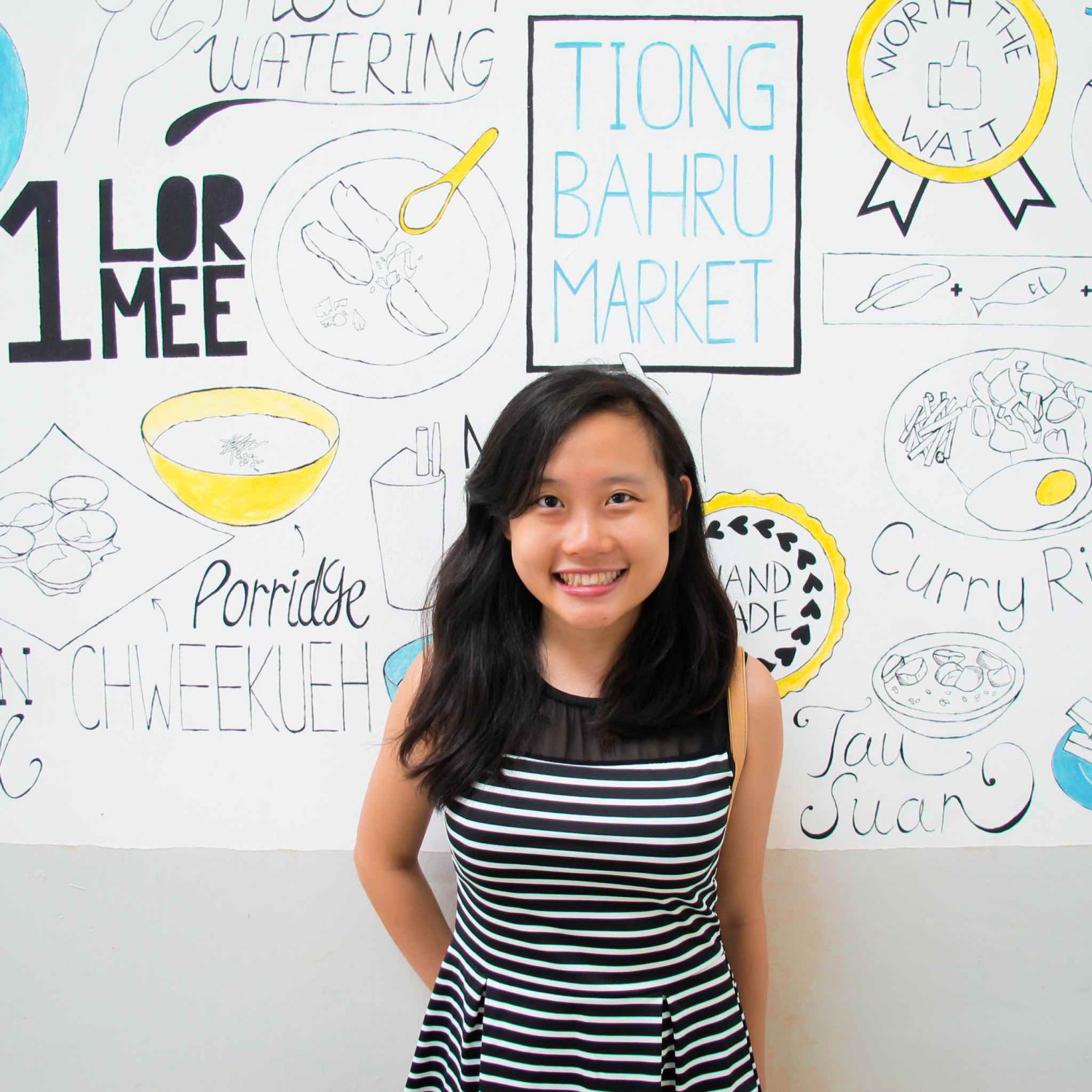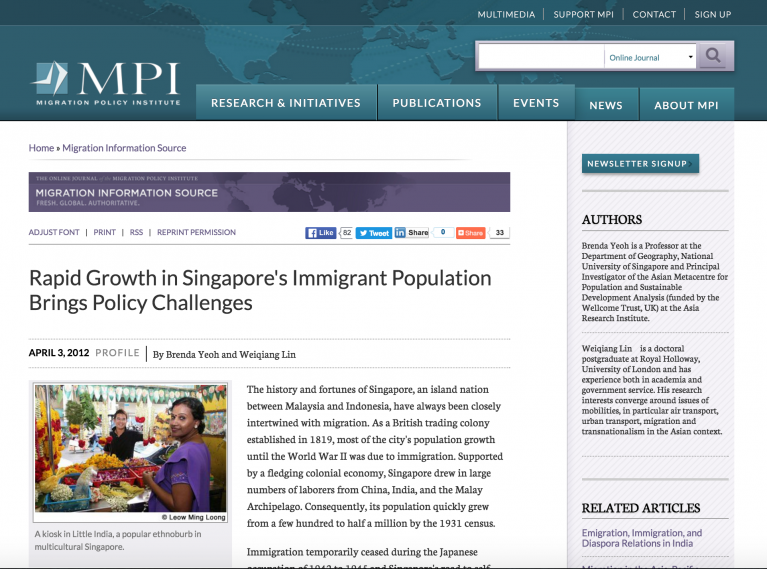This is a more comprehensive overview of migration in Singapore: low-skilled foreign workers, high-skilled foreign workers, foreign students, emigration from Singapore.
Ongoing Issues, Challenges, and Social Change
Having greatly liberalized its borders in the past few years, it is not surprising that Singapore’s migration reality has become more complex. The influx of large numbers of new immigrants into the city-state seems set to continue, even as emigration accelerates and fertility rates fall to a new low (1.15 children per female in 2010, down from 1.60 in 2000). In this context, attracting skilled foreigners to live, work, and settle — while keeping low-skilled workers under thumb — will likely remain a priority for the foreseeable future.
With the prospect that increased immigration could bring new challenges to Singapore socially, the government is working hard to maintain a state of harmony within what is already a multicultural nation. In several high-profile ministerial speeches in 2011, including Prime Minister Lee Hsien Loong’s National Day rally speech as well as former-Minister Mentor Lee Kuan Yew’s recent reminders about the nation’s reliance on immigrants for growth, Singaporeans were encouraged to take a long-term view; continue to welcome talent; and, at least for a while, to “accept the discomfort” of having more foreigners around. While not expected to relinquish their cultures and languages, immigrants have been urged to participate in local events so that they can learn more about the traditions of their adoptive communities.
In 2009, Singapore’s National Integration Council was established to promote interaction and national solidarity between locals and newcomers. Notably, a S$10-million (U.S. $7.95-million) Community Integration Fund was created to sponsor activities that foster bonds between Singaporeans and immigrants. Additionally, 2011 saw the launch of the Singapore Citizenship Journey, an enhanced orientation program for new citizens comprised of online elements, field trips to heritage sites, and community sharing. The People’s Association, which appoints “Integration and Naturalization Champions,” further engages new citizens through home visits, grassroots activities, and community work.
Social integration is, however, far from smooth on the ground. To some locals, newcomers — particularly the ubiquitous Mainland Chinese — are commonly seen as uncouth and prone to objectionable behaviors like littering, eating on public transit, and talking loudly on the phone. Similarly, South Asian construction workers and Filipino domestic workers have also been singled out as targets of public backlash. With criminal activity rising, including several high-profile murders in mid-2011, foreigners have also been blamed for the deterioration of public safety in Singapore.
Immigrants have responded with their own set of rejoinders. A spate of online disputes in 2011 involving Mainland Chinese immigrants ridiculing Singaporeans as “ungracious,” “disgusting,” and “inferior” reveals the extent of social discord despite the state’s efforts toward immigrant integration. In August 2011, an immigrant family from China went so far as to lodge a complaint against their Singaporean-Indian neighbors for the smell of curry emanating from their cooking. In response, a Facebook page urging Singaporeans to prepare curry on a designated Sunday drew over 57,600 supporters. Ironically, Singaporeans of different ethnicities have become more united in this time of discord with immigrants.
Another point of contention relates to the belief that immigrants compete with Singaporeans for jobs. While the state insists that only jobs unfilled by citizens are assumed by foreigners, the government is still frequently criticized for not curtailing the uptake of managerial and professional positions by non-Singaporeans. Suspicions that the labor market is giving preferential treatment to the foreign born — described as “cheaper” and “harder-driving and harder-striving” than Singaporeans — are not helped by certain official statements. In particular, unemployment figures are routinely published as an aggregate comprising citizens and PRs, which obfuscates the actual unemployment rate among Singaporeans.
Paradoxically, a more tolerant side of Singapore emerges when it comes to the rights of unskilled and low-skilled foreign workers. Civil-society action has sought to address the adverse working conditions of foreign-born domestic workers — about 200,000 in Singapore today, mostly women and mainly from the Philippines, Indonesia, and Sri Lanka — since the early 2000s. Many have benefited from the social and advocacy support offered by nongovernmental organizations like Humanitarian Organization for Migration Economics and Transient Workers Count Too. Not only have these groups raised public awareness about the plight of foreign domestic workers, state agencies are now more inclined to attend to cases of abuse.
Similar help has also been extended to the other 670,000 work-permit holders. Some issues being addressed include workplace safety, wage and foreign-levy policy, accommodation standards, and the regulation of unsafe truck transport for migrant workers.
While their efforts are comprehensive in scope, the success of civil society in Singapore remains tied to the will of a strong state. Foreign-born domestic workers, for instance, have long been deprived of regular days off as part of their employment. This particular aspect of domestic work will change beginning January 2013, when a new law mandating days off will take effect. But such extended, hard-fought battles highlight the difficulty that advocacy groups face in lobbying within a depoliticized space. They also hint at how citizens’ distrust towards immigrants can further rigidify officially sanctioned surveillance curbs on foreign workers.
…
In sum, as Singapore comes of age in its development, new opportunities and problems have once again opened up the former colonial city to mobilities. While Singapore has long depended on external resources to satisfy its needs — for its workforce, jobs, education, talent, and even marriage — the country’s goal to augment its population today presents much more complex risks, uncertainties, and challenges, often exacerbated by inconsistent policy outcomes. Indeed, the streams flowing through the highly globalized city have become decidedly more turbulent in recent years. With wisdom, perhaps the nation’s political leaders can weather the storm that is now brewing.






